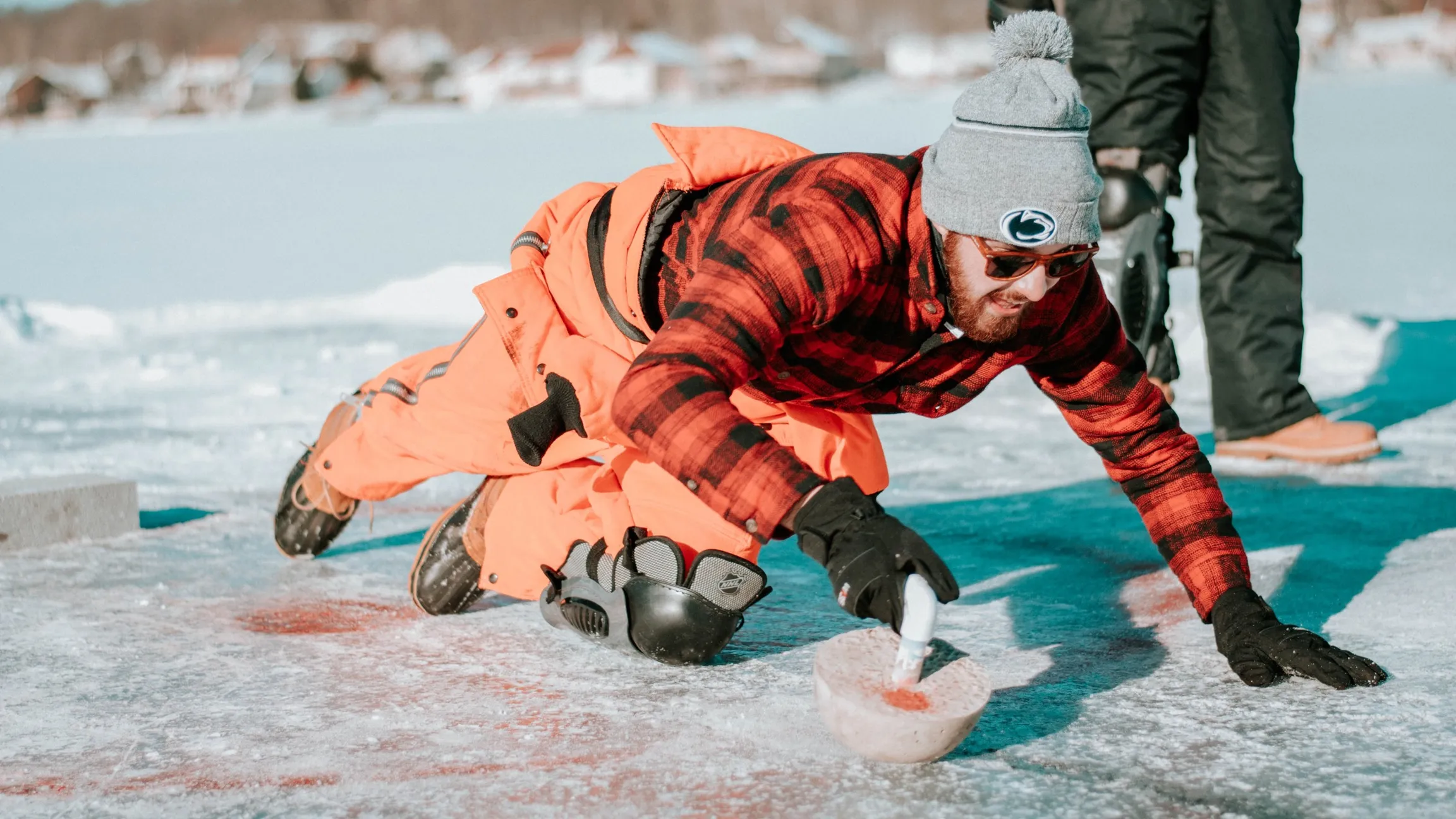The history of curling
The origin of this sport lies far in the past in a distant place. To be precise, it takes us to Scandinavia in the 13th century. Then a little later, in the 16th century, similar forms appear in Holland and the Alpine region. Nowadays it is played mainly in Southern Germany, Austria, Switzerland and South Tyrol, but also the USA and Canada as well as numerous other countries on different continents have discovered curling. The first clubs were founded around the 19th century. Only about 50 years later it comes to the first European championship in 1951 and the first world championship follows in 1983. An Olympic sport is curling not yet, but it is being worked on.
Rules of play - in 3 different variations
Over time, different competition disciplines have crystallized
Team competition
In this discipline, usually 2 teams of 4 players each compete against each other. The stave, that is the target, is placed here on the ice, more precisely on the center cross.
The first player then tries to place the ice stick as close as possible to the stave.
The following opponent tries with his ice stick then either the stave or the opponent's ice stick to move so that his stick comes into a more favorable position.
If a stick is outside the playing field, it is removed again and thus not scored in the scoring. So you should also try to shoot opposing sticks out of the playing field.
It is played until all sticks have been thrown, so each player of a team had one attempt. Then a run, here called Kehre, is finished.
After 6 Kehren it comes to the evaluation of the points. These are dependent on the position of the own sticks both to the stave and the position of the opponent's sticks, which are in the target field.
Target competition
In this game variant 4 sweeps with 6 attempts each are prescribed and it can be played as an individual or team competition.
In the first round, the ice stick must be brought as close as possible to the center cross of the middle target rings and it is then scored the ring that the stick has reached.
In the following round, an attempt is made to transport a target stick, which is set up alternately in the circles A-F, out of the target field. The own ice stick must remain within the target field. Points are then awarded depending on the position of the sticks.
In the third round, the goal is to get one's own ice stick close to the centers of the rings drawn on the right and left rear of the playing field. The points are again dependent on which ring the stick is in
In the final pass, the player must play on a target stick, which is placed in circles A, B, G, H, E and F in turn. So in the first attempt in circle A, in the second attempt in circle B, etc.
In the first four attempts, the player must hit the target stick so that his own stick is as close as possible to the center cross, since a dove is placed there.
In attempts five and six, the player must move the target stick into the back target rings, while his own stick must remain in the target rings to be scored. Points are awarded on each attempt depending on the position of the stick in the rings.
Wide competition
This discipline is probably largely self-explanatory. It stands, in contrast to the other two variants, the high acceleration of the ice stick in the foreground and this as far as possible to shoot.
Each player has 5 attempts, whereby only the best throw comes into the evaluation. The track is funnel-shaped here and can vary in length. If the ice stick leaves the track, the attempt is valid only up to the point of leaving the playing field. In this discipline, it is also important that everyone has the same stick body, as well as the same outsole on their ice stick.
Stick is not equal to stick
The ice sticks can differ from each other in various ways, as the stick consists of three parts. One of the components is the body of the stick, the weight of which can weigh between 2.73 and 3.83 kilos. Furthermore, of course, an ice stick needs a handle, but it is always the same. The last component that can differ is the outsole. In winter, this is made of rubber, which can have different degrees of hardness and then affects the frictional force with the ground.






